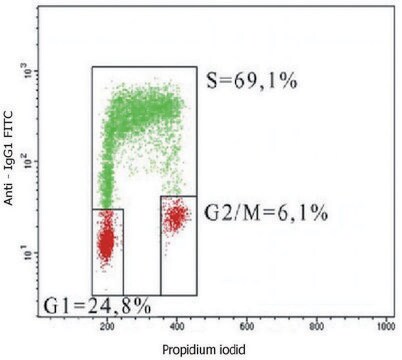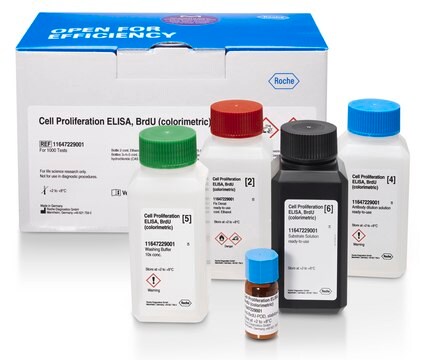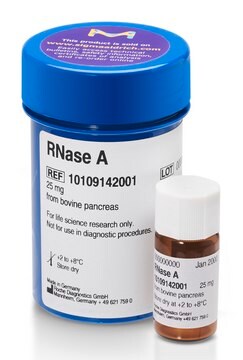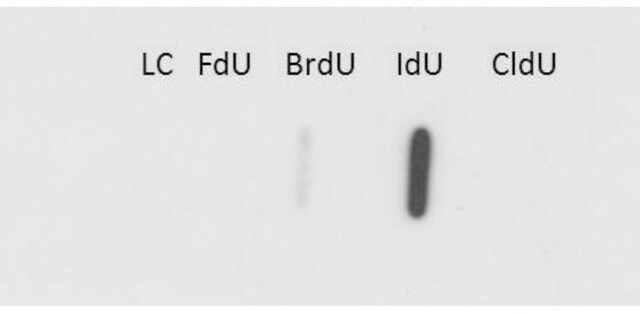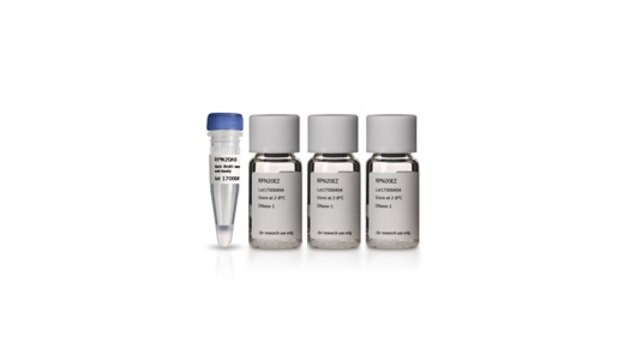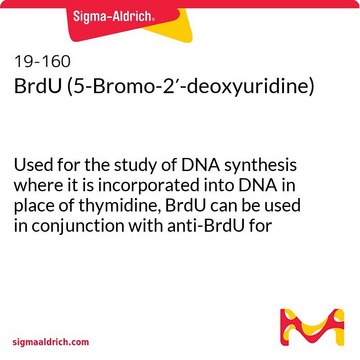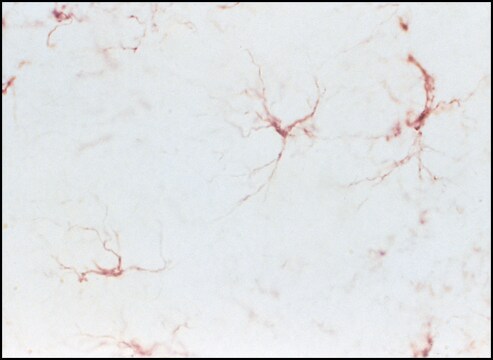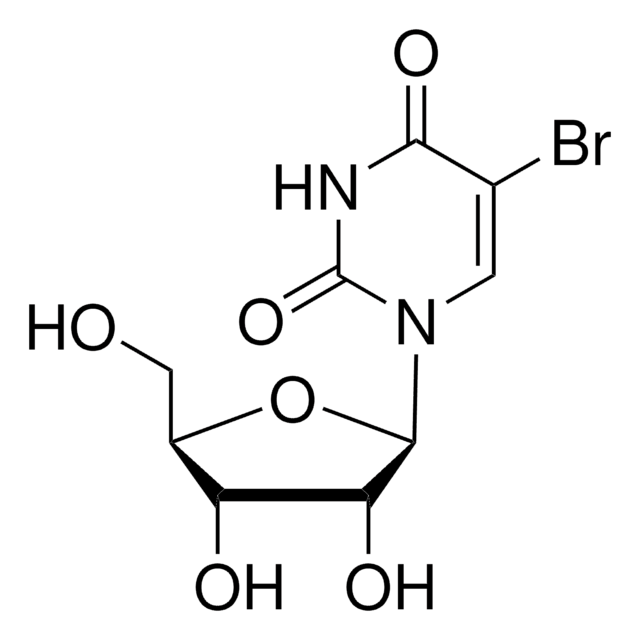B2531
Monoclonal Anti-BrdU antibody produced in mouse
clone BU-33, ascites fluid, Immunohistology Grade
Synonym(s):
Anti Brdu, Anti Brdu Antibody - Monoclonal Anti-BrdU antibody produced in mouse, Brdu Antibody, Anti-Bromodeoxyuridine
About This Item
Recommended Products
biological source
mouse
Quality Level
conjugate
unconjugated
antibody form
ascites fluid
antibody product type
primary antibodies
clone
BU-33, monoclonal
species reactivity
wide range
technique(s)
immunocytochemistry: suitable
immunohistochemistry (formalin-fixed, paraffin-embedded sections): 1:1000 using sections of intestine from mouse or rat treated in vivo with BrdU
isotype
IgG1
shipped in
dry ice
storage temp.
−20°C
target post-translational modification
unmodified
Looking for similar products? Visit Product Comparison Guide
General description
Specificity
Immunogen
Application
Biochem/physiol Actions
Storage and Stability
Other Notes
B8434 Anti-BrdU antibody, Mouse monoclonal
clone BU-33, purified from hybridoma cell culture
Disclaimer
Not finding the right product?
Try our Product Selector Tool.
Related product
Storage Class
12 - Non Combustible Liquids
wgk_germany
WGK 1
flash_point_f
Not applicable
flash_point_c
Not applicable
Certificates of Analysis (COA)
Search for Certificates of Analysis (COA) by entering the products Lot/Batch Number. Lot and Batch Numbers can be found on a product’s label following the words ‘Lot’ or ‘Batch’.
Already Own This Product?
Find documentation for the products that you have recently purchased in the Document Library.
Customers Also Viewed
Our team of scientists has experience in all areas of research including Life Science, Material Science, Chemical Synthesis, Chromatography, Analytical and many others.
Contact Technical Service

